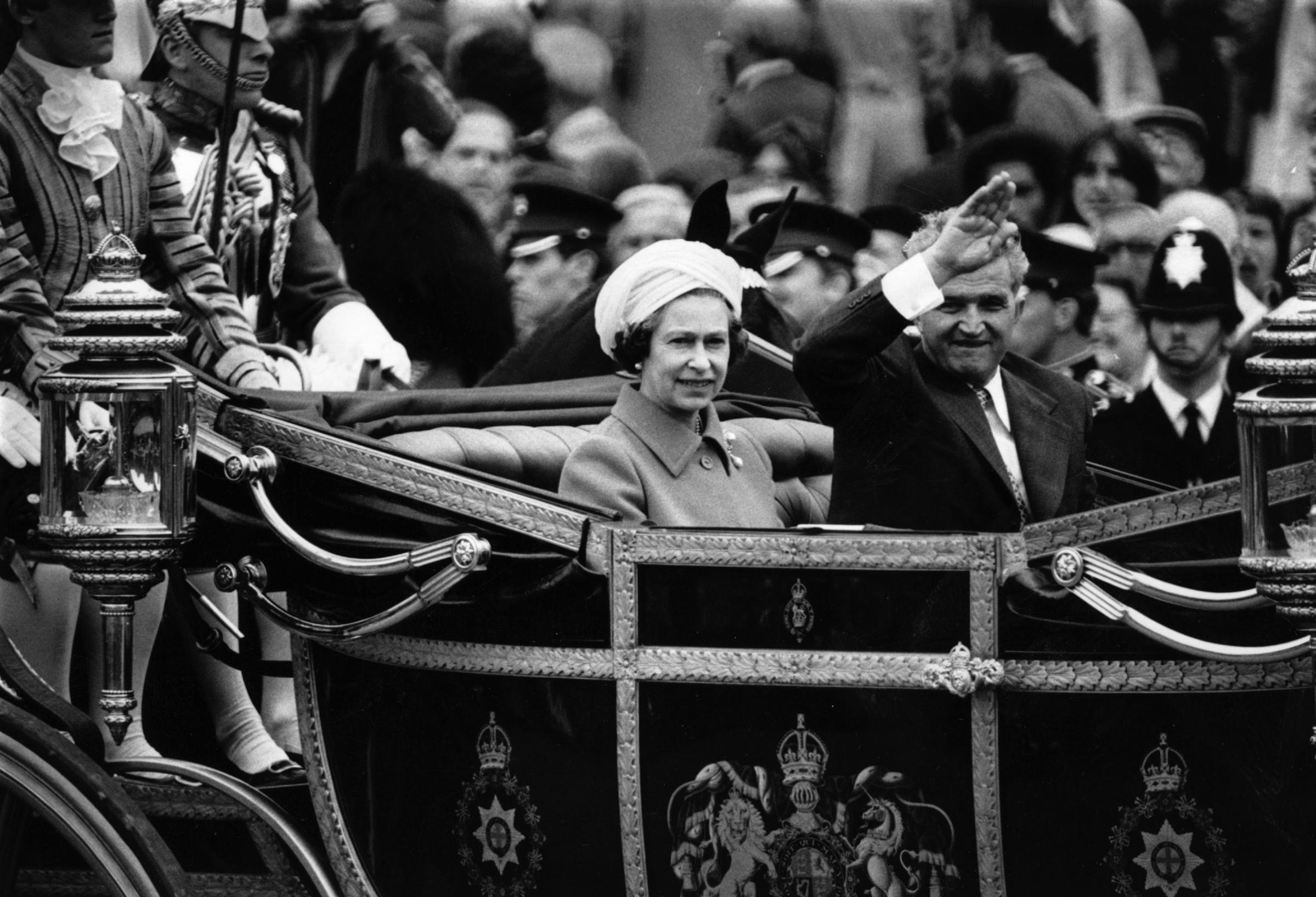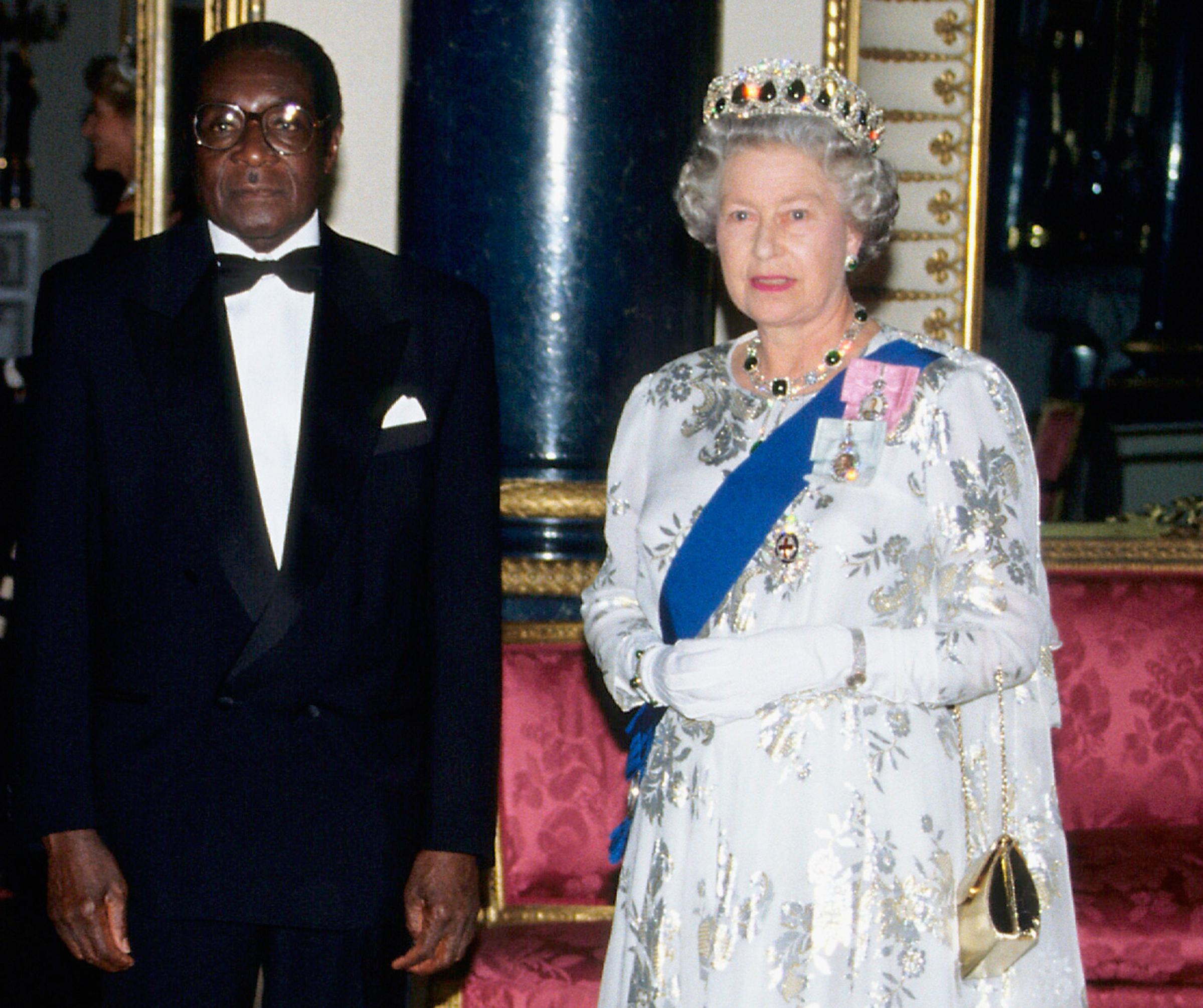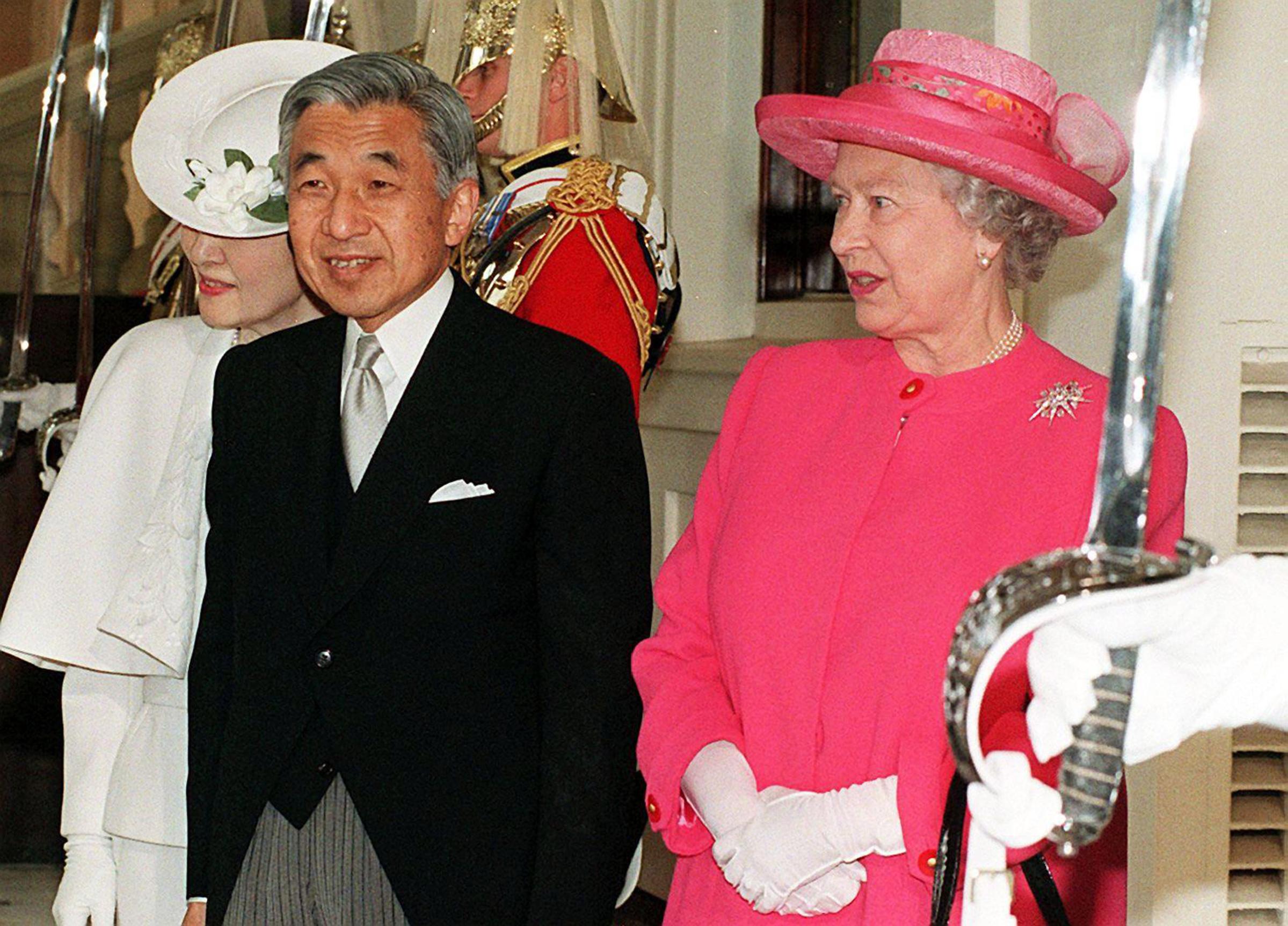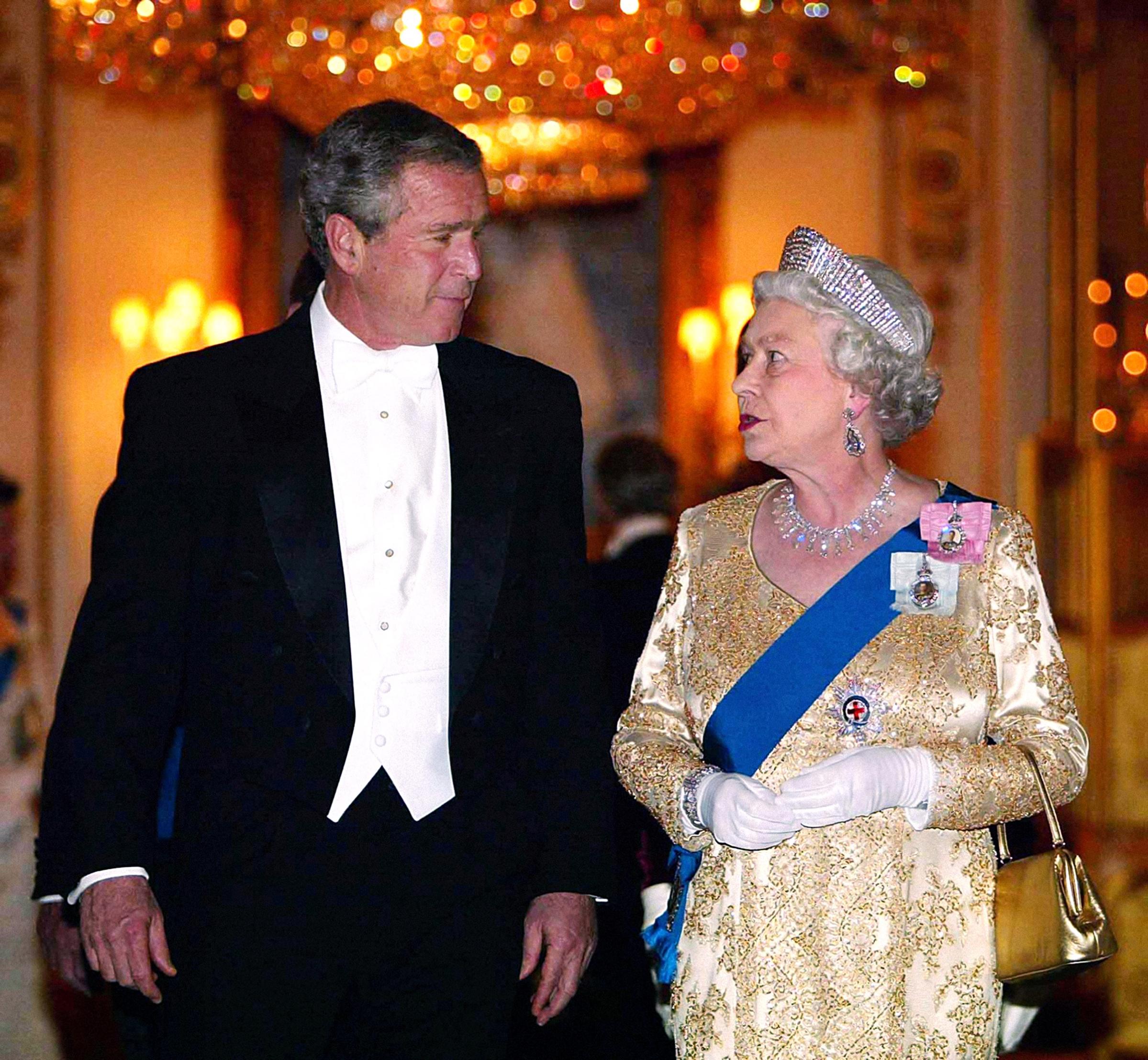With President Donald Trump’s visit to the United Kingdom kicking off on July 12, his supporters across the pond are gearing up to welcome him — as are his opponents, who are planning a protest in central London that includes the display of a blimp dubbed “Trump Baby.” More than a million had signed a petition to stop a visit planned for 2017, and 200,000 have said they plan to protest in the streets of London on Friday.
That dubious honor means that Trump will become part of a long history of world leaders whose visits to the U.K. have raised eyebrows. Britain’s longest-serving monarch, Queen Elizabeth II, has entertained many of them, and is expected to meet President Trump and First Lady Melania Trump at Windsor Castle.
Here are five other examples of heads of state whose visit to the U.K. have sparked controversy during the visit — or come back to haunt the Brits years later:
Mobutu Sese Seko

The President of Zaire (now the Democratic Republic of the Congo) visited in December 1973 as part of a series of appearances worldwide just as he was starting to nationalize his country’s economy. Appearing “resplendent” in his “trademark” leopard-skin hat on the international stage was part of his strategy for charming world leaders and cementing political friendships. “Some were seduced by Mobutu’s eagerness to serve as a bulwark against Soviet expansion in the heart of Africa, others by Zaire’s natural treasure trove of diamonds, gold, cobalt, copper, and the uranium used in the American nuclear bombs dropped on Japan in World War II,” as TIME once reported.
But, though it would soon become clear that Mobutu was not as appealing as he’d seemed — he became known for embezzling at least $5 billion, by one count — this visit is often cited as controversial for a different reason: According to William Shawcross’s Queen and Country: The Fifty-year Reign of Elizabeth II, his wife apparently managed to sneak her dog past Heathrow’s quarantine kennels, and the Queen was afraid her corgis would get rabies so she sent them to Windsor and ordered the dog be taken back to the airport.
Nicolae Ceausescu

Ceausescu, who came to the U.K. in June of 1978, was the first Communist leader to be the Queen’s honored guest as part of a state visit. At the time, from a diplomatic standpoint, Romania was seen as “the West’s best hope in the Eastern bloc,” as the London Times reported. That’s because, as TIME reported in 1976, Ceausescu had “long offended Moscow by his frequent and often strident proclamations of his regime’s independence from the Soviets.” Britain was also working out a £200 million licensing agreement to sell planes to Romania, and experts believed that such economic ties would lead the country to become more Western. The Queen even granted him honorary knighthood, and he granted her a Star of the Romanian Socialist Republic First Class.
The Queen, however, did not appear to enjoy the visit. One royal writer has even claimed that she would avoid running into him at the palace whenever she could.
The displeasure ran deeper than lack of enjoyment. In December 1989, Ceausescu was overthrown by an uprising from citizens fed up with food shortages and the subsequent massacre of protestors by pro-government forces, “one of the largest government-inflicted massacres since World War II,” TIME reported back then. The Queen rescinded his honorary knighthood and gave back the award he gave her as “a mark of revulsion at the abuse of human rights in Romania for which President Ceausescu is responsible,” a spokesperson said. The palace later officially apologized for hosting his visit.
Ceausescu and his wife were executed by firing squad on Christmas Day 1989.
Robert Mugabe

During a state visit in May 1994, Queen Elizabeth II knighted Robert Mugabe, the despot who ruled Zimbabwe from 1980 — when the country became independent from Britain — until November 2017, when his military arrested him. The government of U.K. Prime Minister John Major had invited him in an apparent effort to improve relations; Major’s government had even restored some of the financial aid that Thatcher had cut off when the country was misusing it, violating the terms of their independence pact.
The state visit came not long after Zimbabwe carried out the 1987 massacre of the ethnic Ndebele group, a series of events known as the Gukurahundi, but it became more widely scrutinized later, after Mugabe “stole” his country’s 2008 presidential election, as Samantha Power wrote for TIME in 2008. As news of Mugabe’s opponents being slaughtered made headlines, the Queen revoked his knighthood “as a mark of revulsion at the abuse of human rights and abject disregard for the democratic process in Zimbabwe over which President Mugabe has presided,” the Britain’s Foreign Office said in a statement.
Emperor Akihito

Protesters followed Japanese Emperor Akihito everywhere he went during his visit to the U.K. in May 1998 — from Westminster Abbey to Cardiff, Wales — demanding an apology for abusive treatment of British prisoners in Japanese prison camps during World War II. (His father Emperor Hirohito had encountered the same types of protests in 1971.) Demonstrators lined up to boo and whistle at the procession of carriages that escorted Akihito and the Queen down the Mall to Buckingham Palace. Some turned their backs on the dignitary, and wore red gloves as a symbol of the bloodshed. Some wore white sashes saying “Prisoner of War Japan 1941-45,” and hummed “Colonel Bogey,” the song that’s playing while the Japanese march British prisoners into camps in the 1957 film The Bridge on the River Kwai.
At a banquet, the Emperor said he felt “deep sorrow” about what that moment in history represented and that “the Empress and I can never forget the many kinds of suffering so many people have undergone because of that war.” Protestors did not consider that statement an apology, but the Queen said, “while the memories of that time still cause pain today, they have also acted as a spur to reconciliation.”
George W. Bush

Growing opposition to the Iraq War and Bush’s close alliance with Prime Minister Tony Blair colored a state visit in November 2003, nearly eight months after British and U.S. forces invaded Iraq.
Police estimate that more than 100,000 people attended the protest in Trafalgar Square in which demonstrators toppled a papier-mâché effigy of the American leader, in a riff on the toppling of Saddam Hussein’s statue in Baghdad the April prior. “It’s a fantastic thing to come to a country where people are able to express their views,” the President told reporters.
More Must-Reads from TIME
- Donald Trump Is TIME's 2024 Person of the Year
- Why We Chose Trump as Person of the Year
- Is Intermittent Fasting Good or Bad for You?
- The 100 Must-Read Books of 2024
- The 20 Best Christmas TV Episodes
- Column: If Optimism Feels Ridiculous Now, Try Hope
- The Future of Climate Action Is Trade Policy
- Merle Bombardieri Is Helping People Make the Baby Decision
Write to Olivia B. Waxman at olivia.waxman@time.com